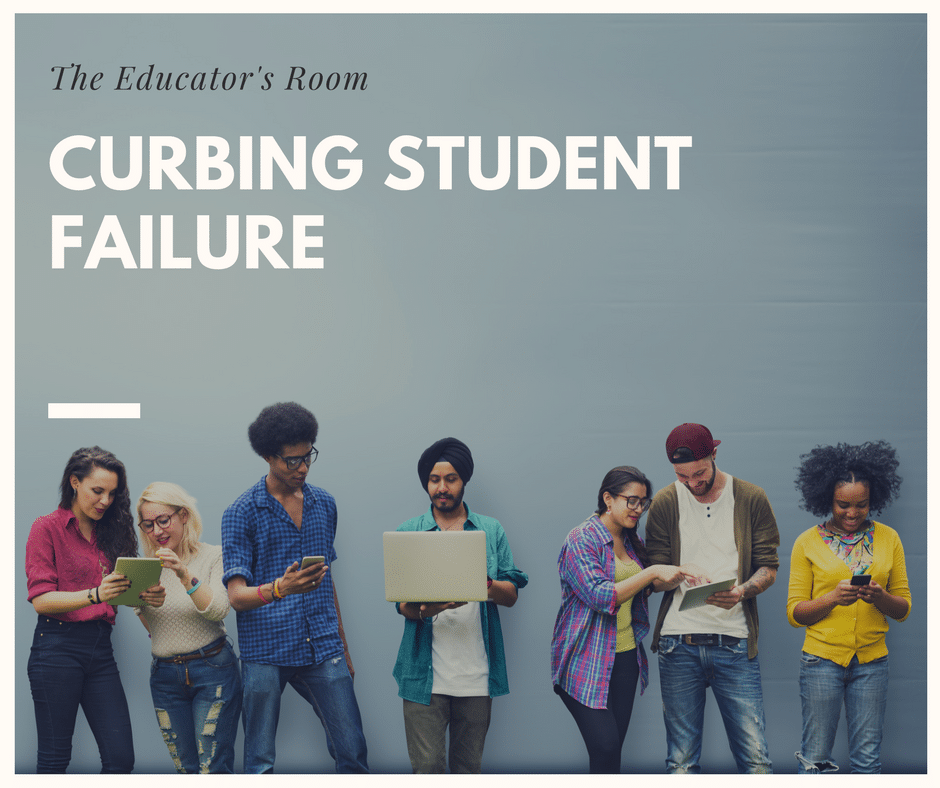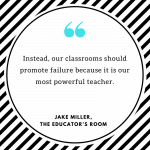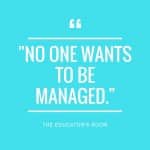Students facing failure is one aspect of teaching that we are familiar with. The term “failure” can take on many meanings depending upon the age of the student, course, and whether we mean earning a poor grade or not making satisfactory progress required to meet the class expectations. There are many signs that a teacher must look for to determine ways to curb student failure. Correcting the situation as early as possible provides opportunities to rectify the situation.
Consider each of the following factors when faced with a student flirting with failure.
Outside Factors
Students come to our classrooms a set of beliefs, expectations, and values. They also come to us with their own personal background. For some students, it’s a home life that we, ourselves, can only dream about: in-ground pool, best sneakers on the market, and never the time to want for something out of his parents’ ability to provide. More students, however, face their basic needs not met at all. Is there the chance that your student is not having some of the basics met: food, shelter, emotional, and physical stability?
Many schools have resources for at-risk students and families, but in my experience, access to these resources is sometimes stifled, and more so, sometimes families do not want to sign-up for assistance in efforts to avoid the stigma. By doing some investigation to see what potential problems may be, try to talk to the student on a one-on-one situation to learn about life at home. You might be surprised at what you can learn in such a short amount of time if you give the student the opportunity to share.
[bctt tweet=”Is there the chance that your student is not having some of the basics met: food, shelter, emotional, and physical stability?” username=”EducatorsRoom”]
Learning Modalities and Styles
Remember your Educational Psychology classes and how many theorists you studied? Consider how you’re teaching your students. Are you including a mixture of methods in order to meet the different learning styles of your students? Even though you may prefer to lecture to the whole class, are you losing students whom perhaps aren’t auditory learners? Or maybe you choose to have students read blurbs in a textbook and later have students apply the knowledge identified during reading?
Despite your preferences for teaching and learning, that a variety of different styles need to be implemented on a regular basis in efforts to provide accessible learning opportunities for the learners before you. Also, remember the value of having peers work with, and teach, one another. Not only is the student benefitting from having difficult concepts retaught to him, but also the peer teaching is grasping a deeper understanding of the material as she teaches and explains it to another student. This model also gives you the opportunity to attend to the student(s) requiring the most of your attention.
Opportunities for Second Chance Learning
If you haven’t realized, standards-based grading is here folks! Beyond assigning a letter grade to an assignment and the progress in a course, we are now tasked with the responsibility of identifying what specific skills our students have met in our courses. Unlike many curriculum models, a skill is not “done” simply because an assignment has come and gone. If a student has not satisfactorily achieved a skill, he or she must be given ample opportunities to achieve that skill later. Sometimes students genuinely do not grasp a concept the first time it is presented to them. Occasionally students need the chance to practice a skill before reaching proficiency. Consider how to provide ample opportunities for re-teaching and supplementary practice when a student is not meeting your skill expectations.
Helping Students Learn How to Learn
Since our students have been in traditional schooling for many years, sometimes we assume that they know how to do this whole school thing. Studying, assignment completion, critical thinking, and knowing how to effectively learn are all skills that typically need to be taught for students to efficiently do them. Did you ever have to take a “Study Skills” course in school – even college? I did, and they claimed it was a service for incoming college freshmen, but let’s be honest with ourselves. The reading material and conceptual tasks we are faced with do increase in difficulty as we progress grade levels. It just makes sense that students need that extra boost to know how to learn intentionally.
In Nancy Kober’s book, Reaching Students: What Research Says About Effective Instruction in Undergraduate Science and Engineering, she writes about how educators need to help our students become “intentional learners.” Each of her tips reminds us to consider whether our lessons and classroom activities are providing everything required to effectively prepare our students to learn. Are you incorporating intentional learning strategies?
-
Activating Prior Knowledge
Kober writes, “Learners of all ages possess understandings, skills, and beliefs that significantly influence how they remember, reason, solve problems, and acquire new knowledge…Rather than simply telling students the right explanation, good instructors make an effort to elicit students’ prior knowledge and use it to help students construct a more complete and accurate understanding” (Kober, Reaching Students). Activating prior knowledge is very often a great tool to use as an anticipatory set when starting the class. It will help get the students get settled and ready, while also informing you about some of their ideas.
-
Learning is an Ongoing Process
“The brain actively seeks to make sense of new knowledge by connecting it with prior knowledge and experience. Through this process, the learner “constructs” new understanding and meaning” (Kober, Reaching Students). Matched with the importance of activating prior knowledge is the identification of how the brain is melding old and new information. Is there perhaps something in this area getting in the way of your student succeeding?
-
Students Need to Independently Decide How to Incorporate New Information
Kober exemplifies the importance of metacognition, known as “the mind’s ability to monitor and control its own activities… Students who have greater metacognitive capacity are better learners overall. They monitor their comprehension as they learn: for example, by asking themselves when they encounter a new concept whether they truly understand it, or by pausing to consider whether their strategy is working when they tackle a problem. If they find they do not understand or are not making headway, they can take corrective steps”(Kober, Reaching Students). Consider if you’re students know how and when to question themselves and when it is time to seek assistance and ask you a clarifying question. Help to develop this my modeling the process of questioning.
-
Allow Peers to Work and Learn Together
None of us are in this alone. We all require others to be the best teacher we can be. Without colleagues, can you imagine how many times we would’ve had to “recreate the wheel!” Make sure that you are providing opportunities for your students to collaborate with one another. Kober again notes that, “Much in the way that children learn to talk by hearing the people around them converse or that adults acquire new skills by working alongside colleagues, students construct understanding through social interactions, such as … collaborating on meaningful learning activities” (Kober, Reaching Students). Even if you are a bit wary of allowing students this time, remember that even if your classroom is loud, it doesn’t mean that quality, meaningful learning is not occurring. Be an advocate for classrooms that are not silent!
Is There a Need for Supplementary Services?
Sometimes students simply do not have the ability to meet the demands of your classroom. There may be a need for supplementary services, in terms of special education services or ELL needs. Even if you are a secondary teacher, there is a chance that a student has not been faced with certain challenges before, therefore not manifesting the need for investigation into supplementary services. Having been a special education teacher, know that even though our days may be full, we are always more than happy to answer any question. See an interesting behavior? Is a student only completing a portion of an assignment? Is the student just staring at you as you instruct him or her? Reach out to the specialists in your building or district to start the conversation about whether or not additional services may be required to help your student meet success and how to start the process if additional services are suspected to be beneficial.
Is it a Purposeful Choice?
I place this concept last because it is one that while many of us may consider, it is not the path we hope for. This is also a difficult conversation to have with parents. As students mature, they feel the need to demonstrate their decision making. Parents hope that they’ve fostered the ability for their children to correctly choose between right and wrong. From the teacher’s perspective, we know that sometimes, the option to fail is a conceivable choice. Working as a high school teacher, I typically had at least one student per year choose to earn a failing grade. Some of the reasons that top the list includes: maintaining a standard among friends, believing that the class credits aren’t necessary, or believing that the skills in the course are not required for adult life. I encourage early and frequent conversation with the student and family to identify ways to make the effort in class worthwhile.
[bctt tweet=”The time you put into knowing your students is never wasted. ” username=”EducatorsRoom”]
A top priority as an educator, you should be aware of who sits in your classes beyond a name on a roster. What makes each student successful? How can you make yourself and your course more approachable, more accessible? The time you put into knowing your students and being vulnerable enough to let them know a little bit about you is never wasted. By curbing failure, it will often help you to do your job better, pick up on signs of concern, and to ultimately help your students know success.





